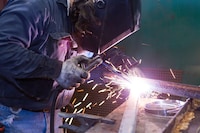
Commercial Roofing

-

GAF Primerless Cover Tape lets you skip the Prime Time!
December 04, 2025
-

What to Know About Torch Down Roofing
November 18, 2025
-

Welding Safety for Roofers
November 11, 2025



